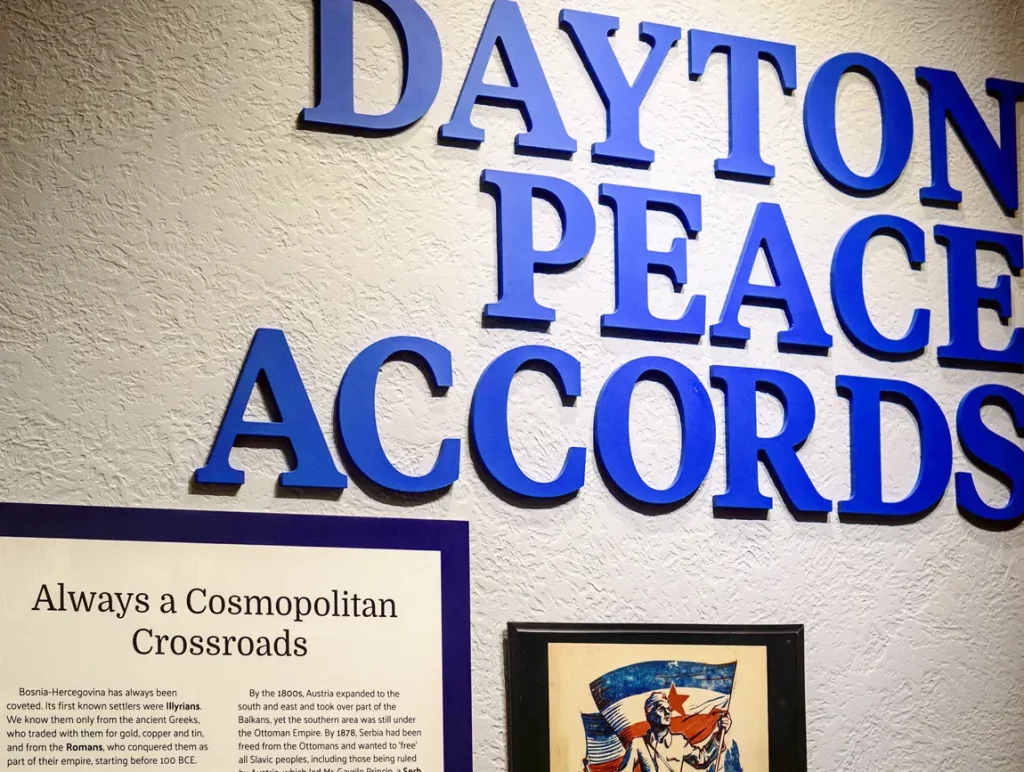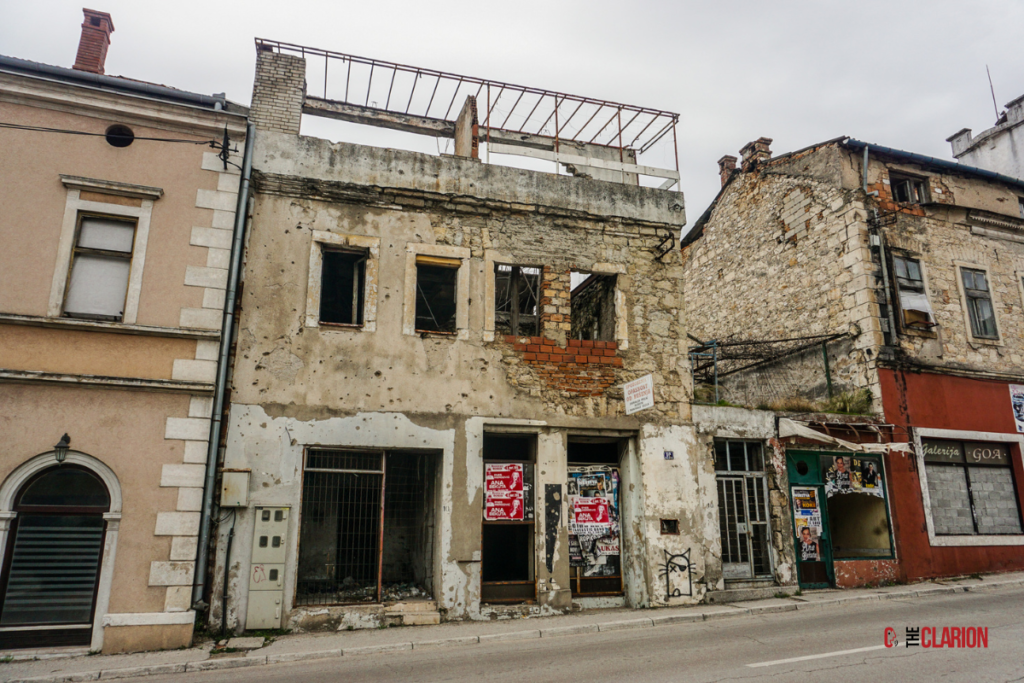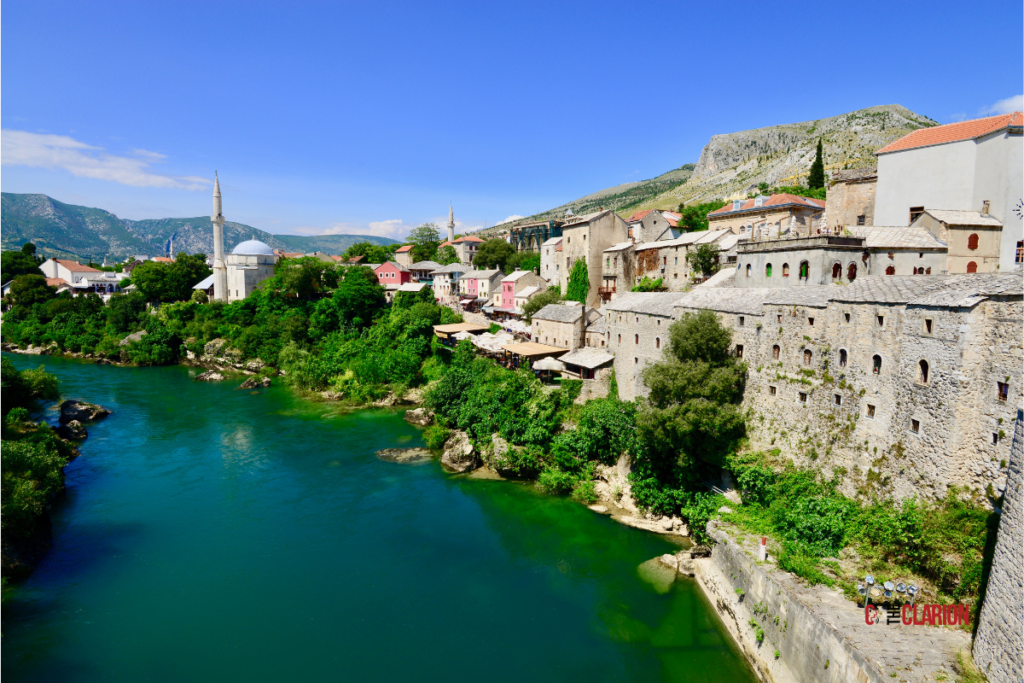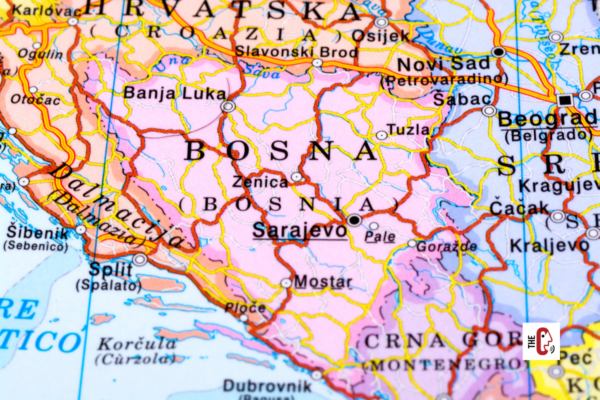I’ll likely never forget the first Bosnians I ever met. Their door, yawning open and welcoming despite the cold Washington night. Their pale faces, ruddy and framed by hollow cheeks. And the smiles they wore, warm despite the brutal night outside. Like many Americans at the time, I was old enough to know the name of the land they came from and the conflict that drove them to our neighborhood, a world away from the place they’d called home for generations.
We’d seen the bombing of their cities, heard of the massacres perpetuated against their civilians. But unlike others, that night the war in Bosnia made its way to our apartment complex in SeaTac just as it would in Dayton, Ohio where in 21 days in November 1995 an agreement would be made to put an end to the violence. For those with links to the Balkans, Nov. 21 is a date worth remembering for what the Dayton Agreement achieved and for what it did not. Nearly twenty-seven years from the day an accord was made at Wright-Patterson Air Base to bring peace to a region ravaged by conflict, there remains plenty for us to learn today.

A Monument To Peace
Dr. Mary Ramey is the Project Coordinator for Dayton Peace Museum’s exhibit on the accords and her passion for Bosnia and Herzegovina has helped educate the general public about the event’s importance. Through her research, Ramey has become an expert on the conflict and its aftermath.
“Like many, my experience of the war was mostly on television, and I was aware of how horrific it was. When we say ‘war’ we think of two armies facing off, but that is not what this was. This war was waged against civilians,” said Ramey.
Through a series of textual and interactive screens replete with audio, Ramey’s exhibit offers a state-of-the-art and in-depth look at the war from its inception. The walls are lined with mementos from the conflict as well, including a Serbian conscript’s uniform and the Croatian president’s plaque from the Hope Hotel. Dayton’s role in the peace accords is also highlighted, beginning with the reason it was chosen to host the talks in the first place.
“They wanted a military installation so that the leaders involved would be isolated. Remember, this was 1995 so there were no smartphones and the internet was mostly email. They wanted them to focus on each other and find ways to get something done.” Ramey said.
As a result, the Gem City would host the Presidents of Serbia and Montenegro, Croatia, and Bosnia and Herzegovina.
“Wright-Patt had a total of six weeks’ notice before 800 civilians descended on the base including negotiators, secretaries, researchers, translators, and communications teams. The presidents were put up in the visiting officers’ quarters, which were standardized. No one received more space than the other,” said Ramey.
Related article: Russia-Ukraine War: Recap of the First Four Months
Despite weeks of negotiations, they entered the morning of Nov. 21 1995 with a deal still uncertain. Those twists and turns are portrayed on the exhibit’s interactive displays, a few taps of a screen revealing the real life drama unfolding behind closed doors.
“The actual accord is only three pages, but then there are 11 appendices. The agreement was initialed in Dayton because the Europeans insisted it be formally signed in Paris. Each president was told if they initialed it was binding.” Ramey said.
Weeks later it would become official. Hostilities ended, a new country rose from the ashes of war, and reconciliation efforts began. But long-lasting peace would elude the region. Just a few years later, Kosovo would be the next flashpoint.

A People Under Siege
Memories of the war remain strong in Mostar. It would suffer heavily during a years-long siege that left much of the historic city in ruins. Opinions about the accord are as strong as those memories, I would learn from a local.
Selmir, a translator from the region of Hercegovina, was a child when the conflict began.
“We had a very good life before it happened. In our city we had near 100 percent employment. We had cars and traveled. In that environment war struck us. Most people thought that it would not impact them, that it would not be a big deal because of how good life was for us at the time. They were wrong,” Selmir said.
Mostar would soon be encircled and bombarded. At just 12-years old, his family home was destroyed and would not be rebuilt until 2003, eight years after the signing of the Dayton Agreement. Even now, some families in Mostar still struggle.
“As human beings, we need to live with each other and tolerate each other in every sense to preserve peace because war brings nothing good to any side,” he said.

The Way Forward
Around the world, many people from Bosnia and of Bosnian heritage continue to process the aftereffects of the war. They see the rise of nationalism and recognize the same patterns that led to the tragedy in the Balkans. A quick look at newsreels in the US and other countries where the rhetoric of hate has become so normalized fills them with a sense of déjà vu. Nedim Ridjanovic, a Bosnian American linguist, is one such person. He knows firsthand just what such rhetoric can lead to. It’s something he sees spreading like poison around the world.
“I was in the US during the war but my father and sister were in Sarajevo. I was able to call twice before the lines were cut. My father told me not to worry. We then had no idea what was going on until I received a letter through the Red Cross. I felt helpless,” Ridjanovic said.
While his father and sister would manage to escape to safety, others would endure a brutal siege that shocked the world. Despite the suffering and pain Bosnians experienced, lessons from the conflict continue to go unheeded.
Political marches in places as varied as Charleston and Budapest bring to the mind of many Bosnians the hate filled rallies that fueled conflict in Eastern Europe, while the politicians who inspire them use the same playbook as Milosevic and other war criminals.
“To prevent another Bosnia, education is absolutely vital. The more educated people we have, the more people we have that can exercise critical thinking so they will not be swayed by nationalistic arguments and propaganda. That is one reason we should strive to make education more affordable and accessible to all. We need people to value facts over opinions. And we need a free press to hold politicians accountable. That is a threat to any would-be dictator and nationalist.” Ridjanovic said,
I could hear just how much this meant to Ridjanovic as he spoke.
“Americans who have not experienced something like that do not know how lucky they are. That is how we can prevent an authoritarian regime from taking hold. It is imperative that we prevent that because we have seen in Bosnia and elsewhere what those kinds of regimes can do,” Ridjanovic added.
Ismael Mujahid
Reporter


